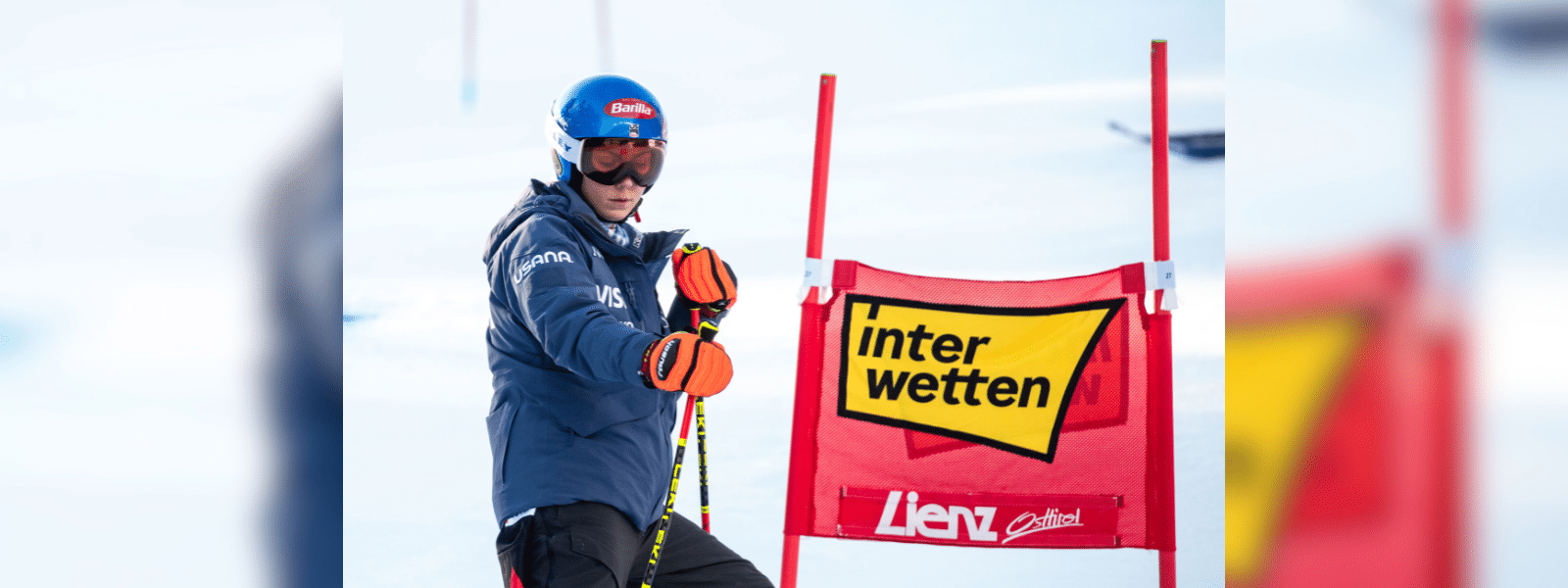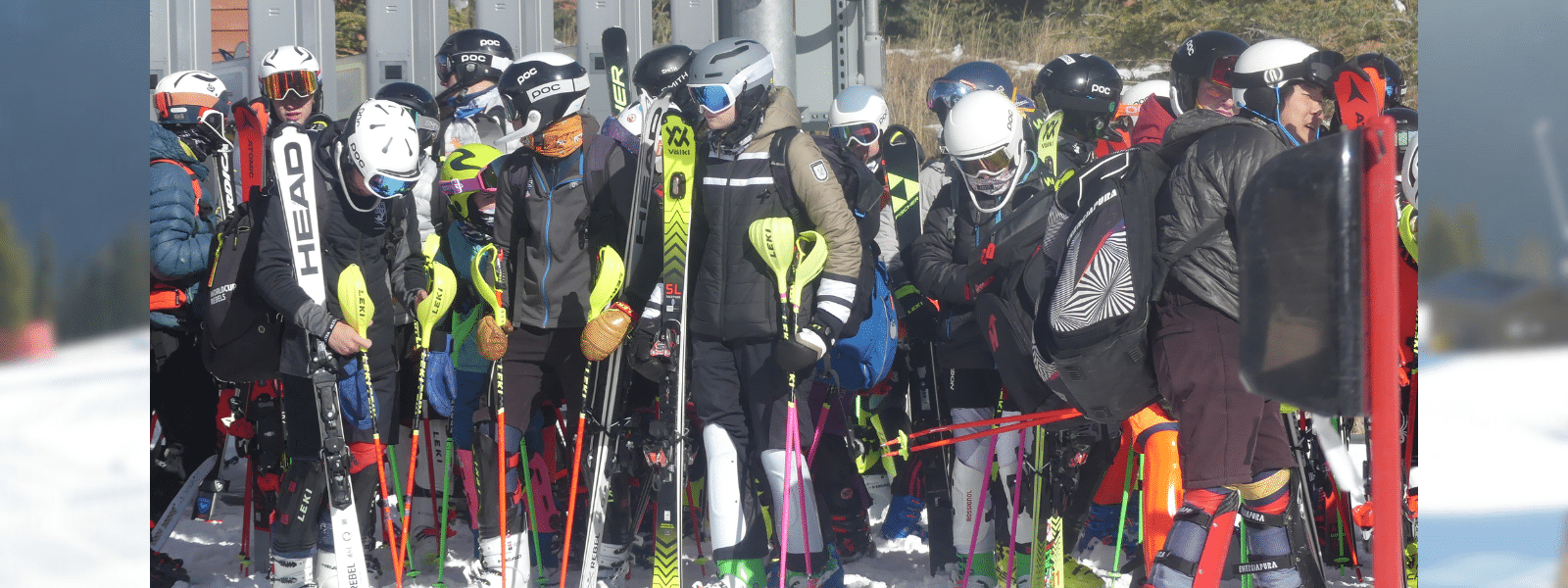The Norwegians Say Ski Racing is a Team Sport (and What the U.S. Can Learn from Them)
Who would’ve thunk it, ski racing a team sport! I always thought it was an individual sport and, on occasion, an individual sport crammed into a team sport’s body (e.g., college skiing). It certainly doesn’t fit into the usual mold of a team sport. Think about what defines a team sport. It involves a group of two or more athletes working together toward a set of agreed-upon goals. Athletes are performing together simultaneously. Their coordinated action is required for success. Competitions are against opposing teams. There are no individual victories in team sports; if the teams win or lose, so do its individual members.
Yet, ski racing as a team sport was all over the news during the 2018 Winter Olympics in Pyeongchang, South Korea, thanks to the Norwegian men’s Olympic alpine team, otherwise known as the “Attacking Vikings.” The men’s alpine team had remarkable success in Pyeongchang, producing four medals, adding to a long list of Olympic, World Championship, and World Cup hardware dating back 25 years, from a country with a pool of only 2.5 million males to draw from. Sure, Norway has a rich history of winter sports participation, but they didn’t hit their medal-winning stride until the 1994 Games in Lillehammer. So, how did the Norwegians turn ski racing into a team sport?
During the 2018 Olympics, The New York Times published a fascinating article about the Attacking Vikings and how they look and act like a real team (as I defined it above). In fact, they act more like a real team than, well, most real teams, for example, those in the NBA, MLB, and NFL. Here is a list of what the Norwegian men do to forge such a cohesive team:
- Team dynamics is the priority above individual ability.
- Have meals together when training and races.
- Share beds (sometimes).
- No jerks allowed.
- No team hierarchy.
- Good team dynamics leads to good individual results.
- Results don’t define happiness.
- Team support is essential.
- Off-snow team life must be good.
- Open and direct communication.
- Friday is taco night!
What I find fascinating about the emergence of this unique and powerful team culture is that not only has it evolved organically rather than being manufactured, but it has sustained itself for almost three decades and with several new generations of athletes. There’s little doubt that the “collectivistic” national culture of Norway contributed to the building and maintenance of this successful sports culture. It also helps that Norwegians seem to be some of the nicest people in the world in which qualities such as humility, unselfishness, and respect seem to be woven into their culture’s fabric and the individuals’ DNA.
Coming from an American-centric perspective, the inevitable question is whether such a team approach could work in the U.S. As someone who knows and has worked with many U.S. Ski Team athletes, to be sure, the USST has plenty of humble, unselfish, and respectful members. And most everyone gets along pretty well. At the same time, no one would accuse the USST of being a warm and fuzzy place to hang out. And, realistically, the U.S. has a dramatically different national culture, built more on individualism and self-interest, which has both strengths and weaknesses.
Based on my work with developing team cultures in sports and the corporate world, I certainly believe that the USST and its junior development programs can benefit from the lessons learned from the Norwegian men’s alpine team. Moreover, I believe strongly that, in the absence of a strong and positive broader sports culture that drives team culture, allowing a team culture left to develop on its own is a recipe for disaster. In other words, whether it’s the USST or a junior program, it’s best to get out ahead of it and consciously and proactively develop a team culture.
The challenge is that there is no single culture that will fit every team and no cookie-cutter mold that can used to create a team culture. So, here’s the tough question that you have to answer: How precisely do you go about building a team culture that best reflects your program? Let me share some insights from my recent experience in helping to develop a positive team culture in a junior program recently.

The Norwegian men’s team culture fosters results like their 2015 Val Gardena podium sweep. Image Credit: GEPA Pictures/Mario Kneisl
What is a Team Culture?
A CULTURE is the expression of a team’s values, attitudes, goals, and actions about their relationships and how they train and compete:
- VALUES reflect what is most important to you and determine your attitudes and goals, and guide behavior and efforts individually and as a team, on and off the hill.
- ATTITUDES are how you think and feel about each other, your goals, your efforts, and how you want to compete.
- GOALS express what you want to achieve as a team (outcome) and what you will do to accomplish those goals (process).
- ACTIONS are where you put your values, attitudes and goals to the test. Talk is cheap and easy; actions speak louder and are harder than words!
If you can get every athlete in on your team to own your CULTURE, every one of you will then be able to live and share its VALUES, ATTITUDES, GOALS, AND ACTIONS. And you will then be a TEAM in the best sense of the word; united with a common purpose to give your best effort, perform to the best of your ability in every race, and win or lose as one.
Tips for Team Culture
- Collaborate with every team member (athletes, coaches, administrators) to identify the team culture and its components (if the team creates the team culture, they will feel ownership of it).
- Post the culture info around the ski room or clubhouse.
- Choose a particular focus of the team culture each week that brings one aspect of the culture to life.
- Before races, pick one or two aspects of the culture that you want the team to express in the race.
- At weekly team meetings, have the team members assess how the team culture is doing, recent culture successes and failures, and a team culture goal for the upcoming week.
- Over all, keep the topic of team culture alive through regular discussions, teachable moments, and celebrations of when the team culture shines.
ATTITUDES are defined as “The way you think and feel about something.” Attitudes are vital because they guide how racers think, feel, and act toward their ski racing. Here is a list of attitudes that I think are helpful in ski racing:
- Process, not outcome
- Challenge, not threat
- Seek out discomfort
- Experiment
- Mistakes/failure are good
- Keep fighting no matter what!
I define GOALS as “The object of a person’s ambition or effort; an aim or desired result.” As you know so well, goals are vital for racers to motivate them and to direct their efforts. Here are some team goals that I believe are useful for a team:
- Support and communication
- Process focus
- Consistently fast
- Respond positively to adversity
- Total preparation
- Bring it!
- No regrets: take your shot!
- Have fun!
For values, attitudes, and goals, the above lists are just suggestions and you should work with your athletes to create values, attitudes, and goals that best fit your team.
How a Team Culture Develops
Coaches can allow the culture of their team develop in one of two ways. First, it can emerge naturally as an expression of its individual members. The benefits to this “organic” approach is that team members feel a sense of ownership for the culture because they created it. But there is a risk that the creation of the team will be unfairly shaped by one or a few team members who may be particularly assertive or controlling, leaving other members of the team feeling marginalized and powerless. And a real danger can arise when the team culture is hijacked by a small subset of the team who are more interested in exerting their own power over the team, however unhealthy it might be. The result can be a truly toxic culture that serves neither the best interests of the team as a whole or its individual members.
The second approach, and the one that I recommend, is for coaches to take an active (though not dominant) role in the creation of a team culture. Through your leadership and open discussions with team members, your team can identify the values, attitudes, and goals that you and they want to act as the foundation of the team culture. This collaborative approach to team culture will ensure that everyone on the team feels a sense of ownership for the culture and, as a result, are more likely to live by its dictates.
Tools for Building a Team Culture
There are also some specific things you can do to actively develop and foster a healthy team culture.
- Be explicit in defining your team’s values, attitudes, and goals (make lists!).
- Identify and enlist team leaders to support the team culture.
- Provide opportunities to build team culture.
- Create shared responsibilities in which team members have to work together.
- Create team rituals such a pre-race dinners or after-race cool-downs.
- Schedule weekly check-ins to get feedback about how things are going.
- Recognize teachable moments and use them to encourage your team culture.
Training Group Cultures
In addition to the over-all culture that a coaching staff fosters to best serve the goals of the entire team and the needs of all of its athletes, training groups within the larger team can also create their own cultures. These training-group cultures better reflect the individual personalities of their coach and racers and the unique goals that they are pursuing. These cultures also allow racers who may be unable to take a leadership role in the team as a whole to exert influence within their training group.
Questions to Ask
Coaches, I encourage you to sit down with the rest of your coaching staff and your racers to discuss the kind of culture your team wants to have. Proactively creating a healthy team culture will pay off in so many ways during the race season including improved communication and reduced conflict, a more positive vibe, better team functioning, and, usually, higher levels of performance and success for the team and its individual members.
Want to be the best ski coaches you can be? Take a look at my Prime Ski Coaching online course. Want your racers to be mentally prepared to ski their very fastest, check out my Prime Ski Racing online courses.





















